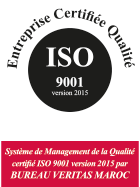The Academy of the Kingdom of Morocco is preparing to publish an Anthology of Malhoun, an exceptional project that resonates like an echo of past centuries and a promise for the future. On January 7, 2025, this event marks a decisive milestone for this ancestral art form, listed as an Intangible Cultural Heritage of Humanity by UNESCO in December 2023...

Malhoun, often described as the “sung poetry of Morocco”, is much more than an art form. Appearing in the XIIIᵉ century in the Tafilalet region, initially developed within religious communities, it gradually spread to Morocco’s major cities, becoming a fundamental symbol of the country’s cultural heritage. The poems, written in dialectal Arabic, tackle a variety of themes such as love, nature, spirituality, and social issues, reflecting the concerns and aspirations of the Moroccan people through the ages. Malhoun, once handed down in family circles or through apprenticeship with masters, has adapted to the demands of the times. Now taught in conservatories, sung at festivals and broadcast on modern platforms, it remains a living art form, rooted in contemporary concerns.
Mirroring social change
The Academy also highlighted its role as a mirror of social change, revealing how this art form has accompanied the mutations of Moroccan society. Far from being a simple compilation, the Malhoun Anthology is the fruit of meticulous and rigorous work. The researchers and artists on the commission have carried out fieldwork, explored forgotten archives and given a second life to poems that were in danger of being forgotten. A major audio recording project was also carried out, featuring over a hundred poems performed by masters of the genre. These recordings, which recreate the melodic richness and emotion of traditional performances, are due to be released shortly, offering the public an audio immersion in this poetic universe.
But the commission’s work doesn’t stop at conservation. It has revealed a new generation of artists (the youngest performer, aged just 15), ready to perpetuate this heritage and who have had the unique opportunity to share the stage with emblematic figures of this art.
Revealing a new generation of artists
This inter-generational encounter is the image of Malhoun: a bridge through which the elders pass on their knowledge and the young inject new energy. The anthology reveals another facet of this art. It brings together little-known works, enriching the existing corpus of Malhoun. New voices and new territories, from towns far removed from the Malhoun tradition. Oujda, often associated with Gharnati, Tétouan, rooted in Andalusian music, and even Laâyoune, in the heart of the Sahara, are now taking their place in this cultural mosaic. The publication of this anthology and associated recordings offers a valuable resource for researchers and artists alike, while raising public awareness of the importance of this heritage. The Academy of the Kingdom of Morocco also plans to organize cultural events, conferences and workshops to further promote Malhoun and encourage its practice among younger generations.
When Malhoun sings of love, faith and history

The origins of Malhoun date back to the 12th century. According to Ibn Khaldoun, during the Almohad dynasty, numerous Maghrebian and Andalusian zajal (poems written in dialectal Arabic) were produced. Originating in Tafilalet and exported to imperial cities in the 13th century, zajal was later associated with Arabo-Andalusian music, reaching its golden age in the 16th century, when the first Malhoun school opened in Meknes.
Having become the music of the city, it developed mainly within craft guilds. The poems or qsayed deal with both religious and secular subjects. These include love and women. Poets sing of love, celebrating the physical beauty of their beloved.
Many qassidas bear the name of a woman, such as Rita, Fatma and Nezha by Driss Benali. The suffering of unrequited love is also a recurring theme among Melhoun poets; in the famous Chemaa or The Candle, Cherif Benali compares the lover’s tears to the wax that spills onto the candlestick. Love of God and of the Prophet is also omnipresent.
Mystical poetry occupies a special place in Melhoun poetry.
The best known today is Ana Mali Fiyach, commonly known as the Fiyachia by the poet Sidi Yahia Cherki. This poem became famous thanks to its interpretation first by Abdessadek Cheqara, a great master of Arab-Andalusian music, and then by the singer El Haj Mohamed Bouzoubaa. Today, this poem is a staple of traditional celebrations and religious holidays.
Amine BOUSHABA


























